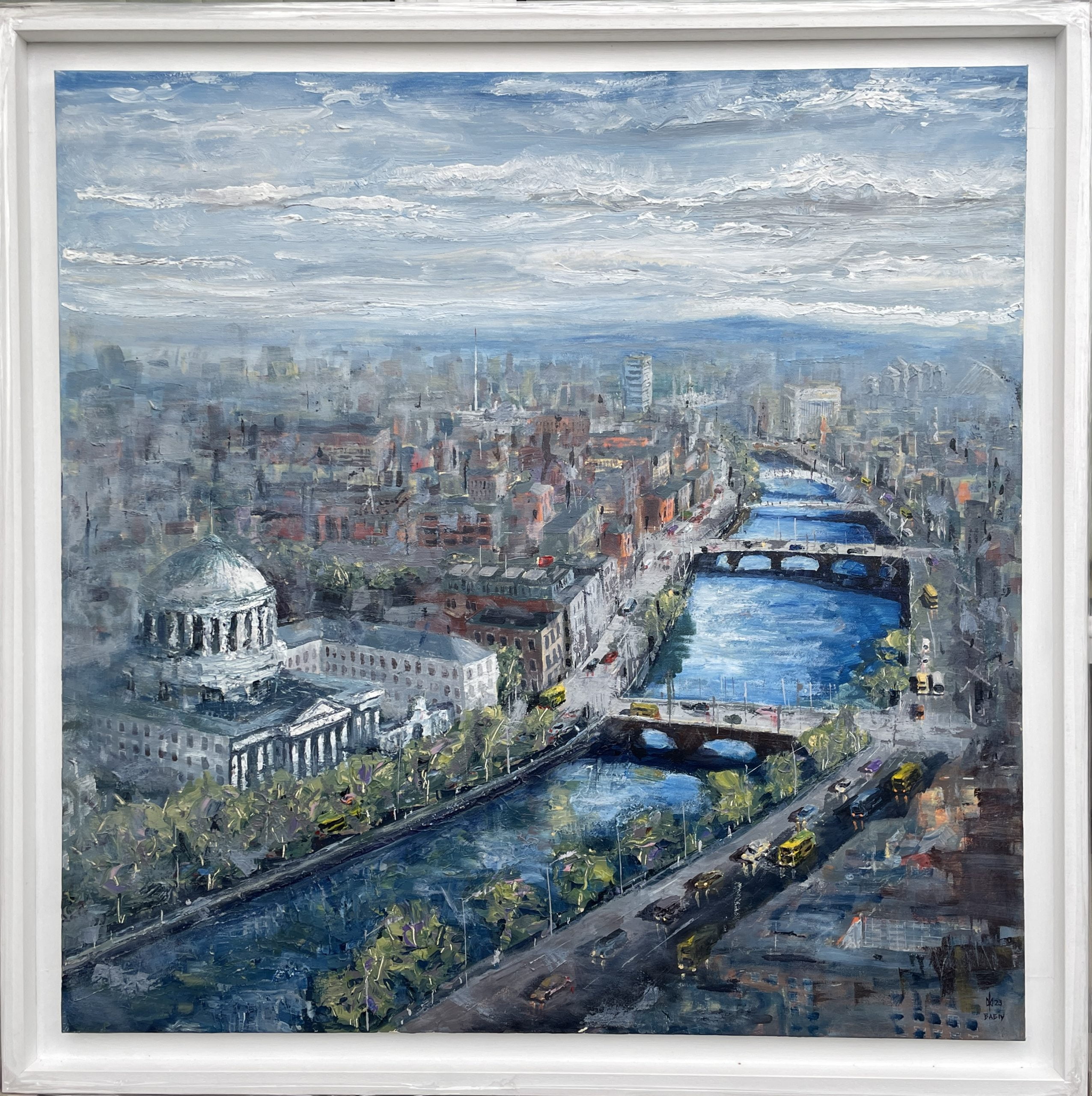Description
This painting is a powerful and terrifying depiction of the horrors of war, particularly in Bucha. Every element of the painting is carefully crafted to convey the emotional significance of these events and the ominous moments of war. The work not only portrays the events but also attempts to show the moral and psychological degradation that war has brought.
Description of the Painting and Its Meaning:
Mass Murders and the Brutality of Russian Soldiers
The painting depicts the execution of civilians by Russian soldiers, with people being shot in the back of the head and numerous bodies abandoned without respect for human life, symbolising violence and the destruction of human dignity.
Child Abductions
One of the most horrifying moments in the painting is the abduction of children by Russian soldiers. This act of human rights violation is brutal and terrifying, reflecting the aggressor’s ruthlessness as they take children from their homeland and deport them to the aggressor country.
The Tragedy of the Maternity Hospital
Rescue workers trying to save a pregnant woman from a bombed maternity hospital represent self-sacrifice and heroism. This is also a tragic moment, as many women and infants perished in airstrikes, highlighting the horrors of war.
Shallow Graves and Bodies as Trash
Bodies of the murdered, buried in mass graves, are depicted as refuse, abandoned without respect. This horrifying act demonstrates how the occupiers strip people of even the most basic rights—a dignified burial and memory.
Drunken Soldiers and Looting
Drunken soldiers looting household items, including toilet sinks and washing machines, symbolise the degradation and moral decay. This reflects the aggressor’s destruction of everything in their path, even the smallest details.
The Occupation of Crimea and War Preparation
The painting shows Crimea transformed into a military base with rockets, symbolising Russia’s meticulously planned attack on Ukraine. This underscores the premeditated aggression and preparation for war.
Trade with the Aggressor: Indifference and Apathy of the World
Eyes observing the events but remaining indifferent, including the symbols of currencies from countries still trading with Russia, show how some nations continue to profit from Ukrainian blood despite the war crimes.
European Barriers in Helping Ukraine
The painting features an eye with the symbol of Orbán’s party, indicating the political barriers some European countries try to erect to avoid helping Ukraine in its fight against the aggressor. This symbolises political indifference and economic interests that overshadow humanity.
Helping Hand and Volunteering
One of the strong metaphors of the painting is the hand reaching out to help those in need. This symbol represents solidarity, rescuers, volunteers, and all those risking their lives to help Ukrainians in difficult times.
International Silence and Inaction
The scenes in the painting highlight the silence and inaction of international organisations and countries that turn a blind eye to the crimes taking place. This is a metaphor for how some governments and international organisations continue to do business with Russia, allowing the aggressor to continue its crimes.
Explanation of Style and Palette:
The Theme of the Painting
The painting tells the tragic story of the Bucha massacre, where Russian troops killed civilians. It raises questions about moral responsibility and international apathy towards these tragedies.
War Crimes by the Russian Army
Russian soldiers are depicted as faceless beasts with red eyes, symbolising their cruelty and moral degradation, devoid of humanity.
Dead Child in the Stroller
The central moment of the painting is the scene with a dead child in a stroller. This moment emphasises the tragedy and the pain of loss felt by parents, and it shows the vulnerability of children in wartime.
Mass Graves for Human Bodies
Bodies of people thrown into mass graves like trash highlight the lack of respect for human life and the moral decay brought by war.
Umbrellas as a Weak Protection
The umbrellas held by Ukrainian soldiers symbolise the helplessness of international organisations in protecting Ukraine from aggression. This image underscores the futility of aid that was neither effective nor timely.
Drunken Russian Soldiers and Looting
Drunken soldiers looting household items reflect the moral decay and the consequences of aggression, which destroys not only lives but also human values.
Child Abduction
The abduction of children from their homeland is an important aspect of the painting that emphasises crimes against humanity and the cruelty of the aggressor.
Eye with the Symbol of Orbán’s Party
This eye indicates the political indifference of some European leaders who refuse to help Ukraine in its fight against aggression.
Volunteers and Rescue
Volunteers saving people symbolise heroism and solidarity. They have become symbols of hope and courage.
Symbolism of Explosions and Ruin
Explosions and destruction in the background symbolise not only the physical but also the moral devastation that war brings.
Style and Palette:
The painting is created in an expressive realism style with elements of symbolism. The main palette consists of dark shades of black, red, and gray to convey the atmosphere of anxiety and destruction. Bright colours in certain elements of the composition draw attention to people trying to save others and to heroism and despair.
Conclusion:
This painting is a powerful message that urges us not to forget the tragedies and crimes that occurred in Ukraine. It emphasises that such brutal acts should not be forgiven or forgotten. We must act to ensure that these atrocities are not repeated.







Reviews
There are no reviews yet.